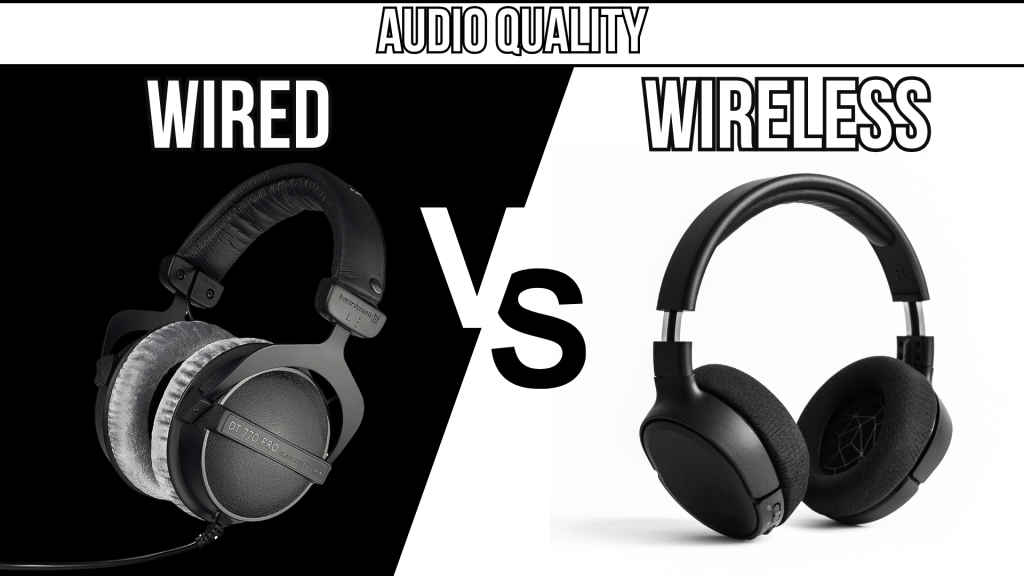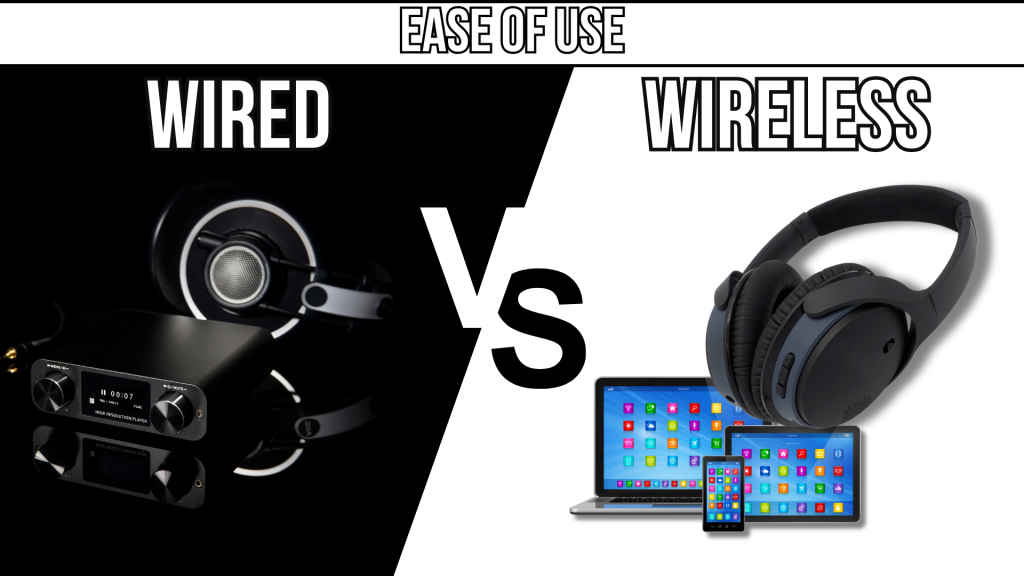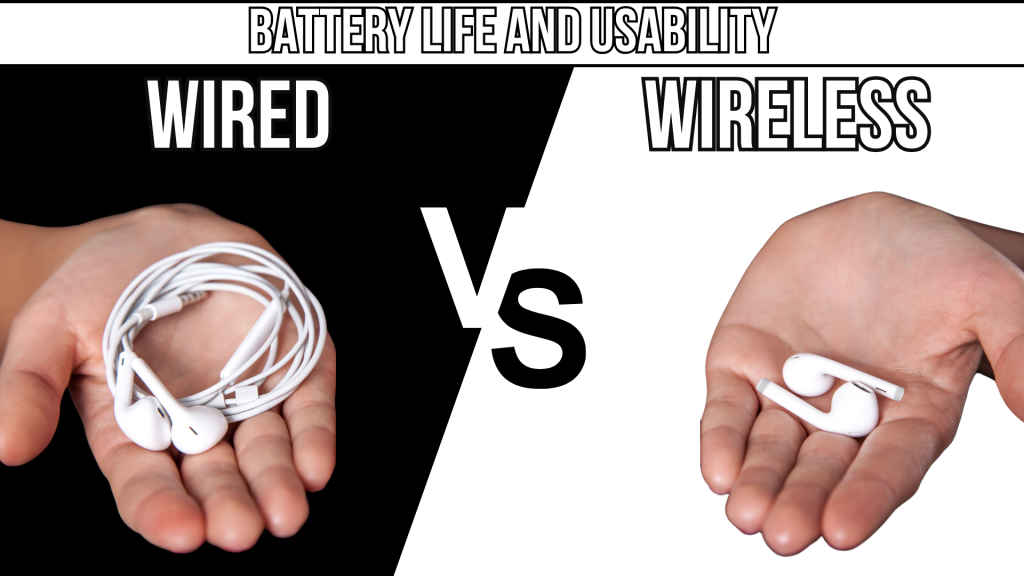Wired vs Wireless Audio: Which is better, how to buy

When it comes to audio, the debates are endless, given the subjective nature of the likeness of devices for many. However, across categories of products, there is one debate that has remained a constant, and that is of wired versus wireless audio. With the advancements in technology over the years, the difference has slimmed down. However, there is still enough that stands on both sides of the debate, which keeps the fire alive, and audiophiles divided. Here, I bring for you a look at both sides of the debate. No personal bias or opinions, just pure objectivity and facts both in favour of and against wired and wireless audio. Have a look at how the battle is between Wired vs Wireless Audio.
 Survey
SurveyQuality of audio – The perpetual point of contention

When we talk wired audio, the idea of having to look for CODECs support, latency, signal strength, and interference (for the most part), goes out of the window. All you need to think about is the way in which you will be connecting your source device to the output. With that out of the way, all you need to think of is in what way you will be connecting your source device to the output.
Now, before the purists come at me, yes, I know; in high-fidelity applications and devices, the interference caused by other electromagnetic signals present around the source device and the wires carrying the signals can cause an issue. However, it is minimal, in comparison to what wireless devices generally tend to encounter. The overall signal strength that wireless audio transmission can carry pales in comparison to that of wireless audio.
Coming back to the quality of audio, most wireless devices, especially the ones that are available with Bluetooth as the only connectivity option, come with SBC and AAC. Both these CODECs are limited in terms of the bit-rates that they are capable of carrying. SBC can do up to 345kbps and AAC can transmit up to 320kbps. Not to mention the issues with the compression and latency issues that come in. There are devices that support high-quality CODECs as well, which I covered in my article about buying headphones and soundbars. However, those come in high-end devices, which are priced higher than most consumer wireless audio devices. When you are talking about wired audio devices, even the simplest audio devices do not have issues in carrying signals with much higher bit rate than the above-mentioned CODEC.
However, for that to happen, we are limited by the source device that is connected to the wired audio device that you are working with. And, that brings us to the topic of convenience. I will circle back to this later in the article. For now, let’s focus on the quality of audio. When working with wired devices, the major thing that you need to take care of, is the fact that whether your source device will be able to power your output device or not. If the output device is underpowered, then you will notice a drop in the loudness and quality of audio. And, that might also lead to your source device going kaput. So, here, what you will need to consider is the impedance of the output device and whether it matches that of the source.
Now, whether you are going for wired or wireless device, in the sound quality department is your choice. If you are a casual listener, then there are wireless options that will do the job for you. If you are working in a studio or working with audio professionally in any capacity, or if you are an audiophile, then wired audio is the way to go for you.
Ease of Use – Wired vs Wireless Audio which is better?

The convenience of use is one area where wireless audio devices have a clear advantage. With no wires to worry about, these devices offer greater mobility and flexibility. You can move around freely, without being tethered to your source device. This is particularly useful in situations where you need to multitask or move around a lot, such as during workouts or house chores. The absence of wires also eliminates the risk of tangling, which can be a common annoyance with wired devices.
However, this freedom comes with its own set of challenges. Pairing devices can sometimes be a hassle, especially if the devices are not compatible or if there are multiple devices in the vicinity. This process often involves navigating through various settings on both devices, which can be time-consuming and confusing for some users. Moreover, the range of wireless devices is limited, and the quality of the connection can deteriorate with distance or obstacles. This means that you need to stay within a certain range of your source device, which can limit your mobility in larger spaces.

Battery Consumption
Wireless audio devices run on batteries, which means they need to be charged regularly. The battery life of these devices can vary greatly, depending on the model and usage. While some devices can last up to 20 hours on a single charge, others may need to be charged every few hours. This can be inconvenient, especially if you forget to charge your device or if you’re in a situation where charging is not possible. It’s also worth noting that the battery life of wireless devices tends to decrease over time, which means that you may find yourself needing to charge your device more frequently as it ages.
On the other hand, wired devices do not have this problem as they draw power from the source device. However, this can drain the battery of the source device faster, especially if it’s a portable device like a smartphone or a tablet. This means that while you don’t have to worry about charging your audio device, you may find yourself needing to charge your source device more often.
Impact of Battery on Size and Usability
The need for a battery also impacts the size and weight of wireless audio devices. To accommodate the battery, these devices are often larger and heavier than their wired counterparts. This can affect their portability and comfort, especially for devices that are worn on the body, like headphones or earbuds. For example, wireless headphones often have a bulkier design than wired ones to house the battery and wireless components. This can make them less comfortable to wear for extended periods, especially for people with smaller heads or ears.
Moreover, the battery and other wireless components can make these devices more complex and prone to issues like overheating or interference. They also require more maintenance, as the battery may need to be replaced over time. This can add to the overall cost and effort of owning a wireless device.
In contrast, wired devices are generally simpler, lighter, and more durable. They do not require batteries, which makes them more reliable and low-maintenance. However, they lack the freedom and flexibility of wireless devices. The presence of a wire can also be a nuisance in certain situations, such as when you’re exercising or moving around a lot. Additionally, wired devices are dependent on the availability of a compatible port on your source device, which can be a problem with newer devices that lack traditional audio jacks.
Wired vs Wireless Audio – What to do?
The debate between wired and wireless audio devices is a complex one, with both sides having their own merits and demerits. Wired audio devices offer superior audio quality, are generally more reliable, and do not require charging. However, they lack the convenience and mobility of wireless devices, and their use can be limited by the availability of compatible ports on the source device.
On the other hand, wireless audio devices offer greater flexibility and ease of use, especially in situations where mobility is important. However, they can be more complex and prone to issues like interference and overheating. They also require regular charging, which can be inconvenient, and their audio quality may not be as high as that of wired devices.
Ultimately, the choice between wired and wireless audio devices comes down to personal preference and specific use cases. For those who prioritize audio quality and reliability, wired devices may be the better choice. For those who value convenience and mobility, wireless devices may be more suitable. As technology continues to evolve, it is likely that the gap between wired and wireless audio will continue to narrow, making this an ever-evolving debate about Wired vs Wireless Audio.
This article originally appeared in Digit Magazine’s March 2024 issue. Order your copy of the Digit Magazine here.
Satvik Pandey
Satvik Pandey, is a self-professed Steve Jobs (not Apple) fanboy, a science & tech writer, and a sports addict. At Digit, he works as a Deputy Features Editor, and manages the daily functioning of the magazine. He also reviews audio-products (speakers, headphones, soundbars, etc.), smartwatches, projectors, and everything else that he can get his hands on. A media and communications graduate, Satvik is also an avid shutterbug, and when he's not working or gaming, he can be found fiddling with any camera he can get his hands on and helping produce videos – which means he spends an awful amount of time in our studio. His game of choice is Counter-Strike, and he's still attempting to turn pro. He can talk your ear off about the game, and we'd strongly advise you to steer clear of the topic unless you too are a CS junkie. View Full Profile